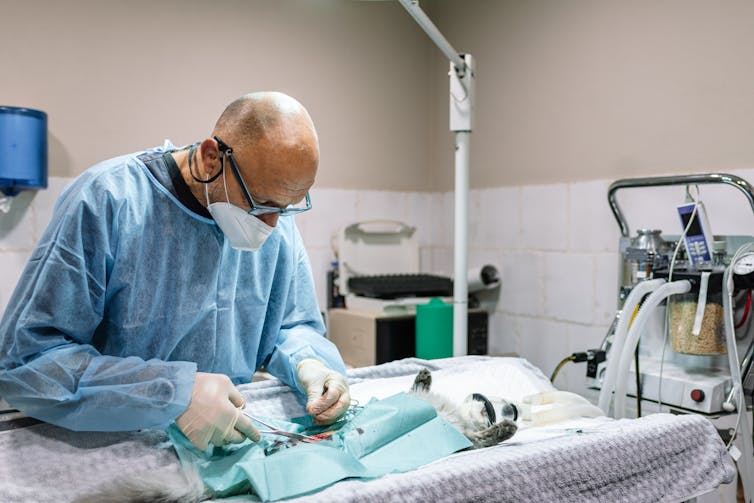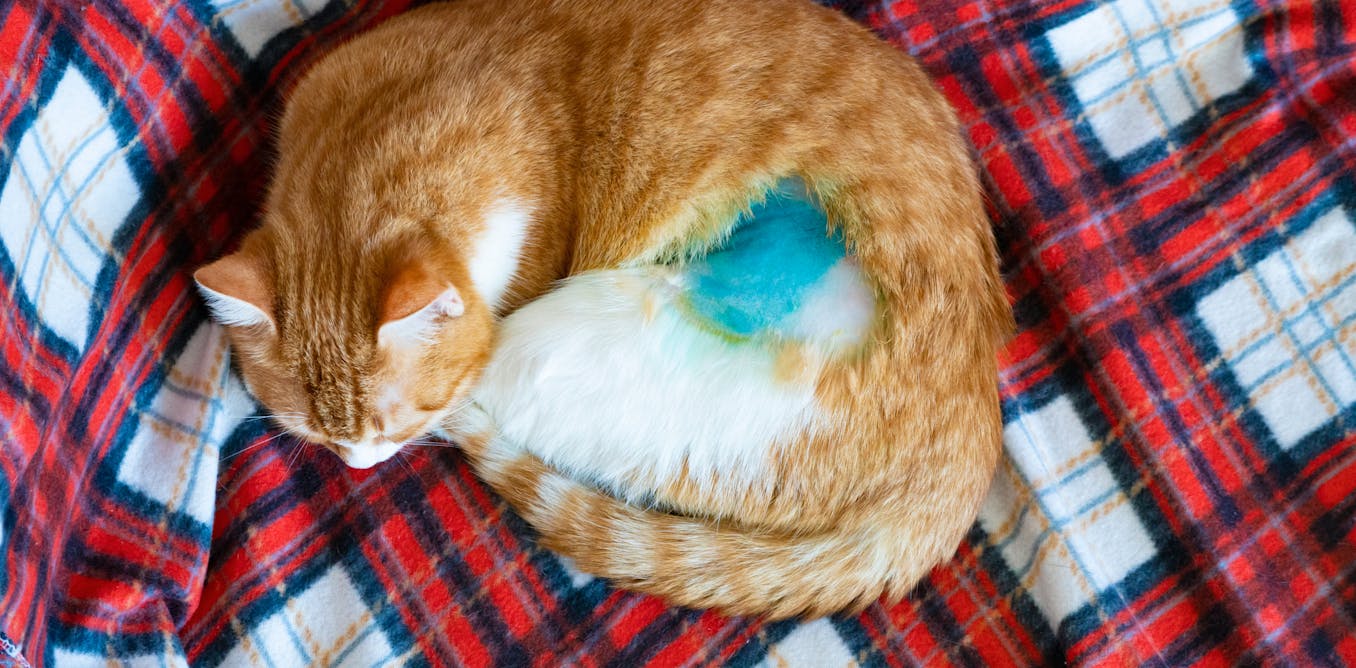[ad_1]
Stray cats are a limiteless draw again all via most Australian cities and cities. They set off many complaints associated to nuisance behaviours and points about metropolis wildlife, together with straining authorities property. Ratepayers lastly pay for the substantial prices created by roaming cats.
Compulsory registration, desexing, microchipping and containment of cats on homeowners’ properties have had restricted have an effect on. We see owned cats and strays roaming all via most metropolis areas. Most strays are in deprived suburbs, the place compassionate residents (thought-about semi-owners) feed and deal with them.
Discussions about cat overpopulation are doable to concentrate on the cats themselves and the challenges they carry. The constraints of present administration methods to deal with cat numbers, comparable to native authorities trapping packages, are uncared for.
Councils protect defending the prices of cat administration with out asking “why are present practices not working?” or “are we consistent with our social licence to carry out?” In quite a few phrases, is there broad help for euthanising big numbers of cats?
An estimated 50,000 are killed yearly. This has devastating outcomes on the psychological correctly being of many animal administration workers.
It’s important to shift the first objective to adopting further smart administration strategies. The reply is a no-barrier, group cat desexing program. This furthermore requires a shift in mindset so animal administration officers give precedence to group help over enforcement.
Our new analysis reveals the wonderful outcomes of 1 such program, solely funded by one native council. Over eight years, cat intakes fell to a 3rd of what they’d been and euthanasia to lower than a fifth. Cat-related complaints fell too. These outcomes saved the council practically half-a-million {{{dollars}}} over the eight years.
Tackling an advanced draw again
Cat overpopulation is an advanced concern with far-reaching social implications.
Council practices can create extra factors, significantly for communities the place residents wrestle to manage to curfews, can’t afford to pay for desexing, or lack transport to get to the vet. People are left feeling overwhelmed and unable to care adequately for his or her pets.
Council officers spend a great deal of time coping with the repercussions. This work incorporates trapping and impounding cats. Figuring out the perhaps closing end result will perhaps be euthanasia harms their psychological correctly being.
So, not solely is there an absence of help for cat homeowners and semi-owners, nonetheless the psychological wellbeing of individuals in animal care roles is uncared for. They embody animal administration officers, shelter staff, rescue teams and veterinarians who should euthanise healthful animals.
The stark actuality is homeowners reclaim solely about 7% of cats taken to kilos and shelters in Australia. That leaves the troublesome choices of adoption or euthanasia for many the cats.
All via Australia, one-third of cats and kittens getting into into shelters and kilos are killed. Most of them are youthful and healthful.
How one council discovered the next technique
Banyule Metropolis Council in Victoria ran a council-funded, no-barriers and centered group cat desexing program from 2013. Our examine tales on the outcomes after eight years.
Cat desexing, microchipping and registration had been free all through the primary 12 months. There have been no limits on the variety of cats from every family. Free desexing continues to be equipped.
To make sure everybody had entry, this technique supplied free transport to those corporations. It impressed semi-owners, who normally fed stray cats, to participate and make the transition to official cat possession.
This technique furthermore centered deprived suburbs. These areas had been acknowledged as hotspots for cat-related complaints and impoundments.
Two Banyule animal administration officers utilized this program. They believed there was the next approach to take care of cats of their group – they usually had been appropriate.
Over the eight years, massive falls in impoundments (66%), euthanasia (82%) and cat-related calls (36%) had been recorded all via Banyule. All through the three goal suburbs, a suggest 4.1 cats a 12 months per 1,000 residents had been desexed.
Desexing prices totalled A$77,490. The council saved an estimated $440,660. This was largely on account of diminished prices by Banyule’s contracted service for accepting cats, and financial monetary financial savings for officers’ time on account of fewer complaints.

Shutterstock
A program constructed on incomes public notion
Worthwhile the idea of cat homeowners and carers is crucial. At first, individuals had been hesitant and suspicious of Banyule’s animal administration officers. This was completely on account of their perceived carry out of enforcement, comparable to issuing fines, pretty than serving to the group.
For the primary 12 months, many individuals anxious about potential repercussions for proudly proudly proudly owning or feeding larger than the legally permitted two cats per property. Residents had been reluctant to reveal the precise variety of cats they owned or cared for. Some households harboured 4 or 5 cats, normally additional, nonetheless hid their presence at first.
Controlling cat numbers turns into a frightening train when the true extent of the issue stays unsure. With out desexing all cats on a property, this technique’s success will perhaps be restricted.
The examine findings spotlight the significance of native councils and communities working collectively to take care of metropolis cat populations. It’s equally important to minimise boundaries to sterilisation and microchipping, and to provide consideration to areas with the perfect costs of cat-related elements and cats impounded.
Cat administration is a gaggle draw again. It will perhaps solely be solved by involving everybody who’s affected. Leveraging group centres, native social staff and help corporations, and completely totally different related corporations for referrals to the council is crucial.
Understanding every group and its distinctive wishes depends upon upon actively participating with residents. This implies strolling the streets and speaking with residents in a relatable approach, not as an authority determine. It’s very important to offer help, steering and academic property to help this system.
This supportive approach is aligned with the One Welfare philosophy primarily based completely on proof that the wellbeing of animals, individuals and their environments are linked. The centered free desexing program achieved elevated outcomes for individuals, animals, the council and the setting than a standard compliance-based approach.
[ad_2]
